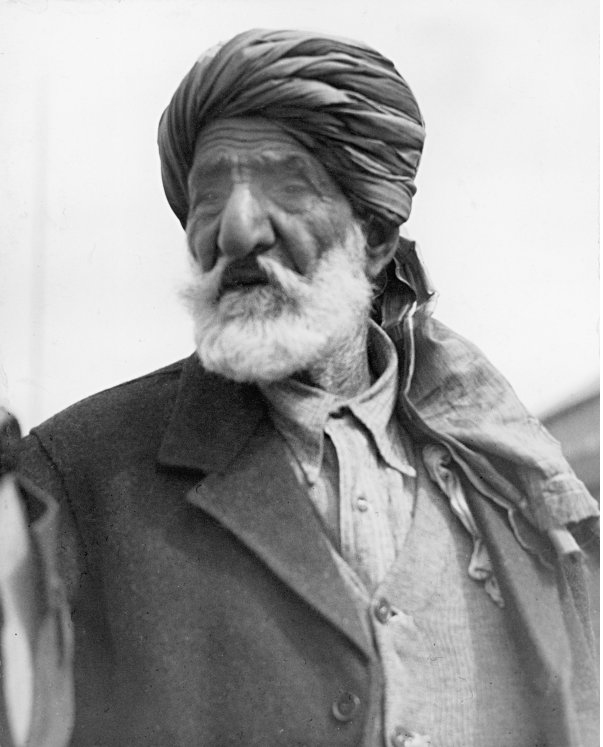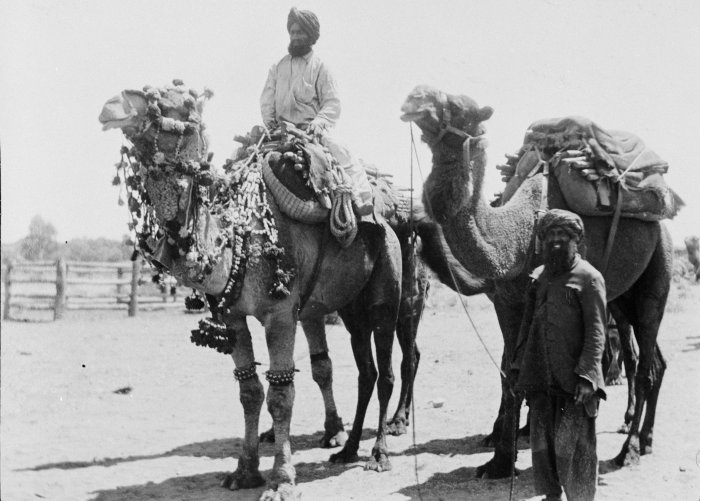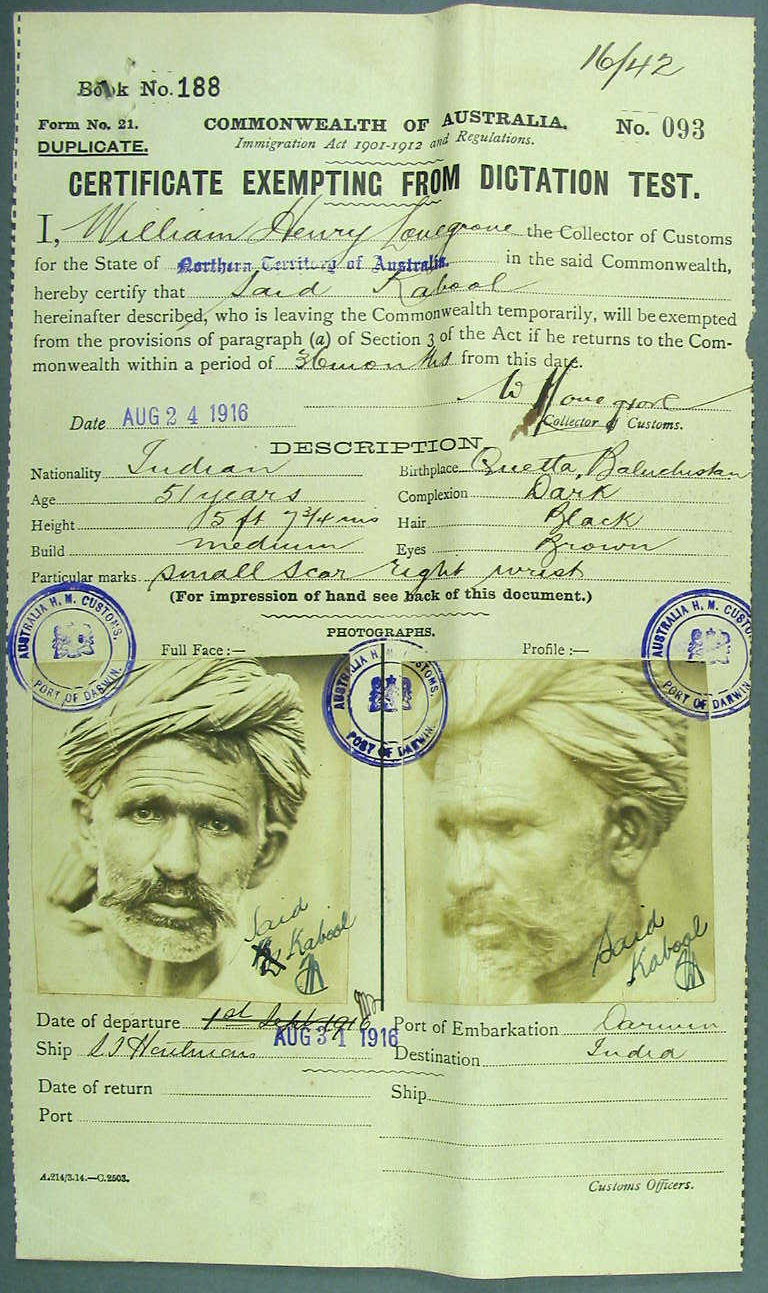Australia certainly has rich ties with the subcontinent. In June, the Adanis received permission to build Australia’s largest coal mine in Carmichael, in central Queensland. Following closely reported attacks on Indian students in Australia in 2009, enrolments declined for a few years, but have begun to pick up again.
However, Australia’s ties with the Indian subcontinent go some centuries back, to when Europeans were still attempting to explore the continent.
Early European settlers in Australia found it easier to live in more hospitable areas along the coasts, but an economic boom in the mid-1800s began to drive exploration further inland. Europeans were able to explore the southeast of the continent on horseback, but the harsh, arid conditions of the west needed more effort.
This was when Indians and Afghans came into the picture. In 1858, when planning the Burke and Wills expedition to find an inland route from Melbourne to the Gulf of Carpentaria, the Philosophical Committee in Victoria requested a horse trader, George Landells, to bring camels with him when he returned from his next visit to India.
Two years later, the first group of 24 camels and three drivers (one Hindu, two Muslims) docked in Melbourne.

Camels and their drivers loaded with goods for the trek between Bourke and Cunnamulla, ca. 1895. Photo credit: State Library of Queensland.
Australia's first camel arrived in 1840 and was the only one of six to survive the arduous ship voyage from Tenerife, off the west coast of Africa. Camels from British India and Afghanistan were closer and more reliable options.
Over the next few decades, cameleers, as the Afghans and Indians were called, helped Europeans to travel across and map much of the western part of the continent. In 1870, they helped carried supplies during the building of Australia's Overland Telegraph, an ambitious 3,200 km project that cut north to south through the middle of the country. Cameleers were also present at gold rushes, helping prospectors with supplies of food and water. By 1901, there were at least 2,000 cameleers in the country, and several times more camels.
Cameleers, however, were never fully integrated into white Australian society. They were regarded with suspicion by European settlers, who eventually suggested that they could handle camels as well as any foreigner and there was no need for cheap labour.
White Australia
Australia's government effectively settled this question in 1901 with its White Australia Policy that made it difficult for non-European migrants to enter the country. By the 1920s, motorised transport rendered cameleers obsolete. Many returned to their home countries. The camels, however, had no option but to stay. Australia is now one of the world's few countries home to camels so feral that as recently as December, the government had to conduct culling operations to reduce their density.
Here are some photos of the South Asian pioneers in Australia.

Bejah Dervish was praised for his loyalty and resourcefulness on the 1896 Calvert expedition. One of the expedition's leaders, Larry Wells, named a landmark in the Sandy Desert 'Bejah Hill'. Photo credit: National Archives of Australia.

Afghans and their camels in inland Australia. Photo credit: National Archives of Australia.

Certificate exempting Said Kabool from the Dictation Test, 1916. Said Kabool arrived in Australia in 1896 and worked in Coolgardie for seven years. At the request of customs officials, local police interviewed residents of Kalgoorlie and Port Hedland to verify Said Kabool's claims concerning his residence in Australia. Photo credit: National Archives of Australia.

Unloading the camel team in front of the store at Boulia, ca. 1895. Photo credit: State Library of Queensland.

Afghan cameleer escorts Mrs Walter Lawrence Silver on the wallaby track, ca. 1904. Photo credit: State Library of Queensland.

The cameleers generally lived away from white populations, at first in makeshift camel camps, and later in 'Ghantowns' on the edges of existing settlements. Typical house in 'Ghan' town, Marree, South Australia, c. 1947. Photo credit: National Archives of Australia.












![[Photos] Meet the pioneering South Asian camel drivers who helped to explore arid Australia](https://sc0.blr1.digitaloceanspaces.com/large/688697-b75ab983-ac60-4f77-9530-cd3a33616c53.jpg)